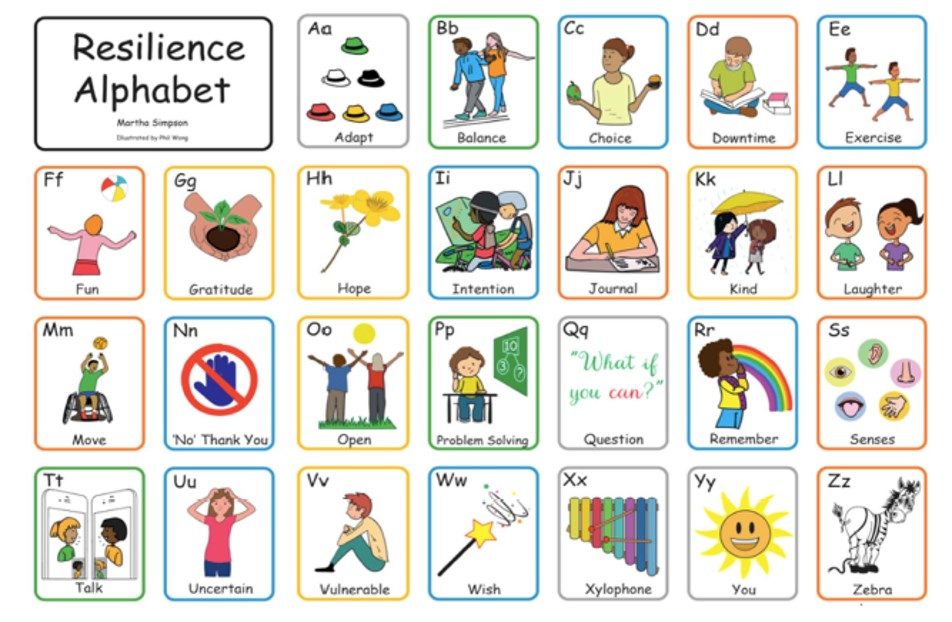Resilience is the ability to bounce back despite the odds. It is not developed by being left to struggle without support.
Children who are resilient despite the odds are often referred to as’dandelion children’. They have a secure attachment and so have developed a positive internal working model. In turn their view of the world is of a positive place abundant with opportunities and exciting experiences.
Life is a bumpy journey. Everyone experiences setbacks, frustrations and hard times. Some experience extraordinary challenge. However, the greater the number of protective resources and processes an individual possesses the more likely they are to thrive. (Dr T Noble )
Developing resilience is complex but these factors/ protective processes can support this development-
- A significant adult who takes an interest can provide reassurance when failure is experienced ( link back to session 1 surrogate attachment figure-teacher) .
- Mastery of ‘something’ finding and experiencing success
- An environment/classroom which is safe and secure both psychologically and physically
- Teaching optimism and positive attitudes
- Strong family/ school links
- Relationships and a sense of belonging where the children are affirmed as people with positive qualities.
- We don’t have the same amount of resilience every day.
Education Scotland has produced a Resilience Alphabet tool to promote discussion with primary age learners: Resilience alphabet – building inner strength and wellbeing for kids – primary | Resources | National Improvement Hub (education.gov.scot)

For young people in our high school settings, Education Scotland’s ‘The Jounery’ resource may be helpful: The Journey: Adventures in Resilience | Resources | National Improvement Hub (education.gov.scot)

The Strengths of Resilience
Edith Grotberg of the International Resilience Project defines resiliency in terms of three sources. For a young person to be resilient, he or she needs to have more than one of these strengths.
I have :
- Trusting and loving relationships with others -Parents, siblings, teachers, friends.
- Structure at home – Clear rules and routines, comprehensible and fair sanctions when breached, praise when followed.
- Role models – Parents, other adults, peers, siblings, who model good behaviour and morality.
- Encouragement to be independent – People who offer praise for growing autonomy.
- Access to health, education and social care – Consistent direct or indirect protection for physical and emotional health
I am:
- Loveable – The young person possesses, or is helped to develop qualities that appeal to others.
- Loving – The young person is able to express affection to others, and is sensitive to their distress.
- Proud of myself – The young person feels they have the capacity for achievement and resists discouragement.
- Responsible – The young person accepts and is given responsibilities, and believes their actions can make a difference.
- Hopeful and trustful – The young person has faith in institutions and people, is optimistic for the future and is able to express their faith within a moral structure.
I can:
- Communicate – The young person is able to express feelings and thoughts and listen to those of others.
- Solve problems – The young person can apply themselves to problems, involve others when necessary and be persistent.
- Manage my feelings – The young person knows and understands emotions, recognises the feelings of others and controls impulsive behaviour.
- Seek out trusting relationships – The young person has the ability to find people, peers or adults, in whom they can confide and develop mutual trust. Understand my temperament – The young person has insight into their personality and that of others.
This format is similar to the ‘My World Triangle’ approach used in Fife.
There are many ways we can support the growing resilience of children & young people. Further examples are included in this Resilience Toolkit:
Resilience in the Spotlight
Older pupils may respond well to learning about celebrities who have overcome adversity, barriers & challenges to enjoy the success they now have.
Examples include:
- Albert Einstein who didn’t speak until he was 4 years old.
- Jim Carey, the American actor who was homeless at 15.
- Stephen King & JK Rowling, authors whose initial novels were rejected by publishers by as many as 30 times
- Jay Z & Ed Sheeran, musicians who struggled to gain a record deal
- Jamie Oliver (tv chef), Holly Willoughby (presenter) & Tom Cruise (actor) all have dyslexia
This is is by no means exhaustive and there are many more examples which could be explored.

